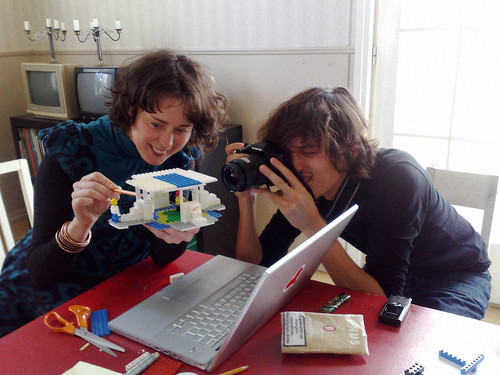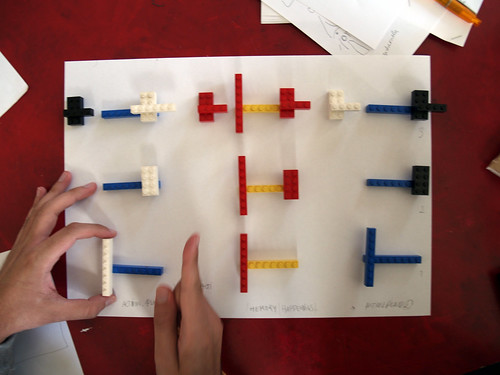

Pop-Up Landscapes has extended out of themes which I have been exploring both through my artistic work and that with the company Polar Produce and in my academic research practice (social and educational psychology). In 2007, I directed the OFFLOAD: Systems for Survival Festival (Bristol). Inspiring OFFLOAD was the concept of survival ‘flexible organism-in-its-environment’ (Gregory Bateson, Steps to an Ecology of Mind, 1972, p. 457).
This concept of survival opens up the term, allowing for the consideration of not only the biological but also psychological, cultural and physical survival. Survival in itself also demands considering extension, adaptability, transformation and interdependency, the latter become a central concept within the project. These terms continue to be worked in the discussions with project collaborators and invited guests as we discuss the nature and form this process and project takes.
Pop-Up Landscapes takes these ideas but specifically aims at expressing them through the creation of tangible experiences that mediate survival, as the extension and projection ones individual landscape and its inherent interdependency to our environs. This interrelation – between the self- our environments- and one other – is an act of survival, a process which is as much about what is gained, as it is about failure and loss.
Pop-Landscapes is therefore the exploration of how our individual constructions and actions, no matter how small, can be considered as momentary acts of survival, which influence our perceptions and our relations with others and our environs.
The question for me then became – how do you express this? How would you create an aesthetic object and experience, which can sit in a public place and almost ‘turn up’ this expression? Our human, ‘survival tunings’ and associated environmental interdependencies? How can you make something that acknowledges the fragility and strength of this experience and express it in a form which is immediate but also acknowledges the remote other? In considering these associations I was particularly interested in the relations between our individual, mental landscapes and constructions – the physical built environment – and climatic conditions (e.g., temperature, pressure, humidity).
In initiating the project, my first intention was to invite colleagues old and new, who I knew had an interest in this area to thematically discuss and present their positions. I drew on people working in the fields of graphic design, architecture, geography, archaeology, landscape and urban research and design, the visual arts and performing arts. Once this selection was made I sent a brief to explain the project intentions, possibilities of what a Pop-Up Landscape could be and also included the idea of working three elements – installation, workshops and seminars, community activities. These elements were to be worked in parallel but also function as stand alone expressions of the project themes. From these initial beginnings the aim was to define a set of guidelines and questions and begin the build.
However with all great plans, there is change! Opportunities presented themselves and for the first phase of this project, I have had worked closely with Pedro Viana, lok Arquitectura (PT/ES) and designer-artist, Tuomo Tammenpää (FI). In working with this A-team, we have realised together, what is presented here as Phase 1 of the project (Oct 08-May 09).
During this period we have been refining, extending, going forward, sometimes go backwards and going forward again. Attempting not only to realise the initial broad ideas but also learning how to work together, to speak from our different individual, professional and cultural understandings, to work side-by-side, at distances and create something together! The first phase of this project reflects this period of playing, making and discussing!
Teresa Dillon
2008/09
Phase 1
Public art installation
Drawing on landscape art, psychology and the Battleship board game the first prototype of the Pop-Up Landscapes project combines landscape photography and sensor technologies to create an interactive triptych composition within which direct, photographic impressions specific to locations we worked within, can be inputted. This composition can then be manipulated and played with depending on the individual’s position within the installation and the number of people experiencing it.
The first prototype test (0.1) Pop-Up Landscapes was realized at Hangar, production media house and artist residency space in Barcelona (Jan-March 2009), with the support it is technical team (Alex Posada and Lluis Bigorda). Visually the project drew on the radical urban transformations, which have been taking place over the last decade in Poble Nou.
The second prototype test (0.2) began with a public stress test at the EME3 architecture conference, CCCB, Barcelona, with further developments taking place during the Transformation Residency, Mação, Portugal, 14-26, April 2009.
Phase 1 will complete with further technical tests at The Pervasive Media Lab, Bristol (May 2009).
Seminar Series
The seminar series offers the opportunity to extend the project reach by inviting practitioners working on related issues to present their viewpoints. The aim here is to build up a body of transdisciplinary knowledge, which reflects the project themes.
Community activities
The aim of the community activates is to distill a set of approaches or techniques that reflect the Pop-Up Landscapes themes and which can be used independently by communities and practitioners.














